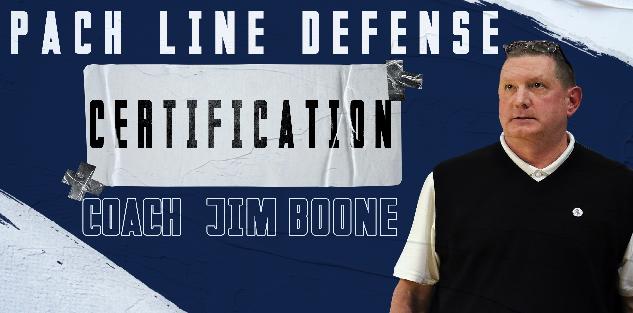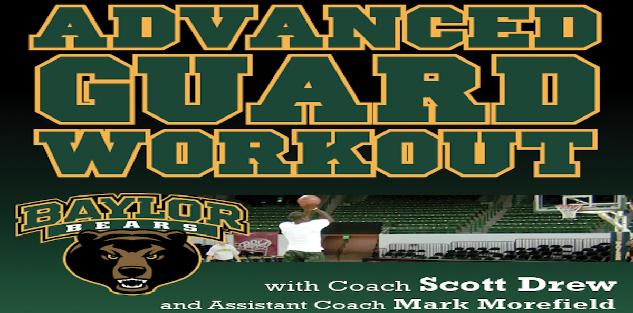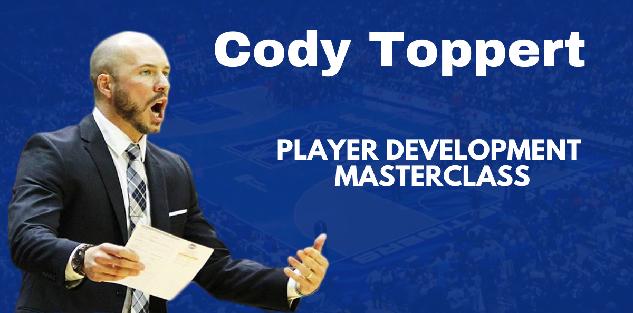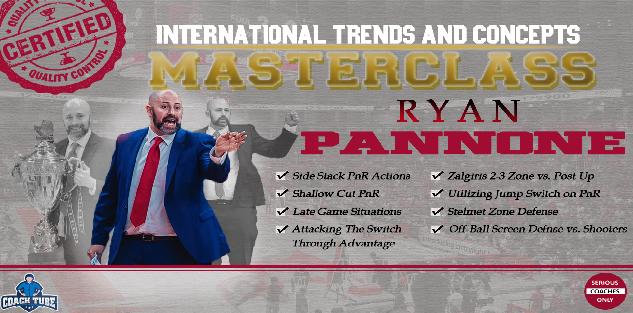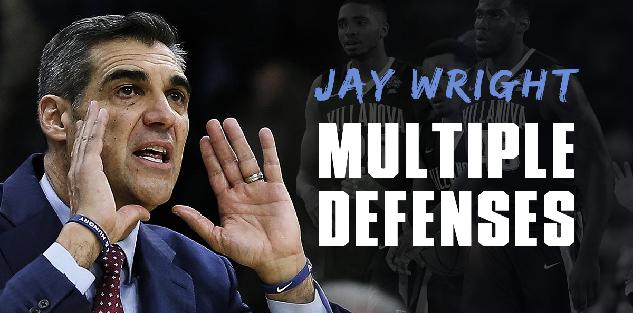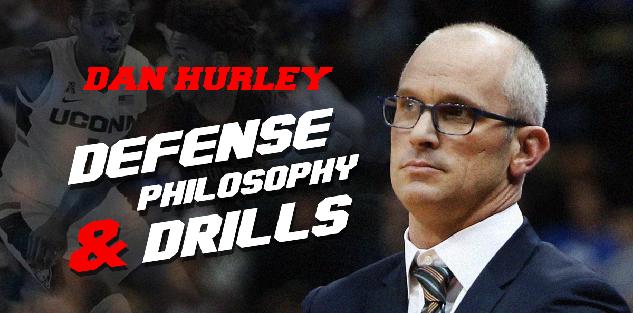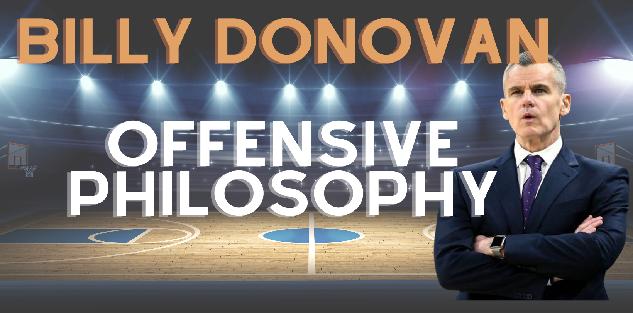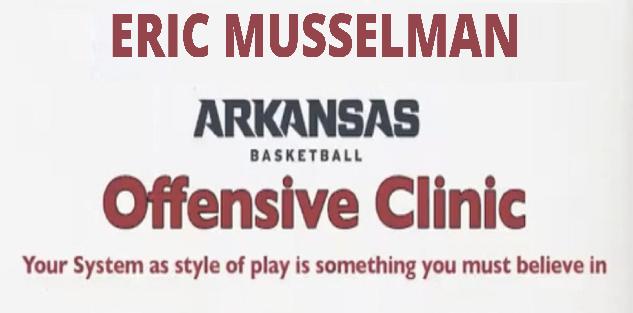Featured courses
- Two Great Game Situational Workouts For the Basketball Offseason by Grant Young
- Two Reads Basketball Players Must Understand Before Executing the Ball-Screen by Grant Young
- Two of LSU Coach Kim Mulkey’s Game-Winning Inbounds Plays by Grant Young
- Three Effective Early-Season Defensive Basketball Drills by Grant Young
- Four Essential Tips For Basketball’s 1-3-1 Zone Defense by Grant Young
- Four Zone Defense Drills to Strengthen Your Team by Grant Young
- How to Beat the Three Most Common Pick and Roll Coverages by Grant Young
- Two Drills to Improve Shooting at the Start of the Basketball Season by Grant Young
- Core Basketball Principles That Dallas Mavericks Coach Sean Sweeney Teaches by Grant Young
- Three Competitive Shooting Drills For Your Basketball Team by Grant Young
- How To Teach The ‘I’ Generation of Basketball Players by Grant Young
- Three Elite Drills to Begin a Basketball Practice With by Grant Young
- How to Build a Championship-Winning Basketball Team Culture by Grant Young
- Two of Texas Women’s Basketball Coach Vic Schaefer’s Tips For Team Culture by Grant Young
- Atlanta Dream WNBA Coach Brandi Poole’s Four Sets for Secondary Offense by Grant Young
- NC State Basketball Coach Brett Nelson’s 4 Crucial Point Guard Qualities by Grant Young
- Kentucky Coach Mark Pope’s Five Guard Rules For Offense by Grant Young
- McNeese State Basketball Coach Will Wade’s 4 Core Pillars by Grant Young
- 4 Tips To Instantly Improve Your Free Throw Shooting by Tyler Linderman
- Assemble a Championship-Caliber Basketball Rotation by Brandon Ogle
- Two of UConn Coach Dan Hurley’s Key Defensive Drills by Grant Young
- Four Post Moves All Basketball Forwards Should Have In Their Bag by Grant Young
- Four of Baylor Coach Nicki Collen’s Midseason Pick and Roll Adjustments by Grant Young
- WNBA Legend Sue Bird’s Two Tips For Attacking on Offense by Grant Young
- Houston Coach Kelvin Sampson’s Three Keys for Building a Basketball Program by Grant Young
- Two of Tom Izzo’s Top Michigan State Defensive Drills by Grant Young
- Four of Olympic Gold Medalist Coach Mechelle Freeman’s Relay Race Strategies by Grant Young
- Three Key Strategies Will Wade Uses to Build a Dominant Team by William Markey
- Five UConn Huskies Men’s Basketball Plays That You Can Use by Grant Young
- Three Tips for Maintaining Team Culture at the End of a Basketball Season by Grant Young
- Three Dribble Drive Motion Drills to Teach Your Basketball Team by Grant Young
- Three Dribbling Drills For Non-Primary Ball Handlers by Grant Young
- Four Advanced Ball Handling Drills For Basketball Guards by Grant Young
- Three Tips to Sharpen Your Post Player’s Footwork in Basketball by Grant Young
- These Three Pick and Roll Drills Are Crucial For Any Ball Screen Offense by Grant Young
- Three Closeout Drills to Improve Basketball Shooting Defense by Grant Young
- Three Tips to Perfect the Packline Defense in Basketball by Grant Young
- Four Keys to Executing the Read and React Offense in Basketball by Grant Young
- Three Tips to Develop Elite Basketball Shooters by Grant Young
- Three Crucial Keys to Executing the 5 Out Offense in Basketball by Grant Young
- These Three Offensive Sets Will Help You Beat Any Zone Defense by Grant Young
- Three Transition Basketball Drills To Play With More Pace by Grant Young
- Three 5 Out Offense Drills Any Basketball Coach Can Use by Grant Young
- Four Vital Techniques for a Motion Offense in Basketball by Grant Young
- Three Baseline Inbounds Plays To Win Your Basketball Team Games by Grant Young
- Four Drills For Sharpening the European Ball Screen Offense by Grant Young
- Three Positioning Tricks For a Basketball Zone Offense by Grant Young
- Three Rules to Perfecting Basketball's Lock Left Defensive System by Grant Young
- UCLA WBB Coach Cori Close’s Two Keys to Winning the Mental Game by Grant Young
- Four of Alabama Coach Nate Oats’ Favorite Basketball Drills by Grant Young
- Three Ways To Turn Transition Offense in Basketball Into Points by Grant Young
- Three Drills to Master Basketball's Pack Line Defense by Grant Young
- Three Transition Defense Drills to Halt Fast Breaks by Grant Young
- Four Offensive Rebounding Drills to Win Second Possessions by Grant Young
- 4 Defensive Technique Drills from Boston Celtics Assistant Coach Brandon Bailey by Marek Hulva
- 5 Drills to Improve Ball Handling by Tyler Linderman
- 13 FUNNY BASKETBALL GIFS by Alex
- BASKETBALL SPEED AND AGILITY: 8 QUESTIONS FOR COACHTUBE EXPERT RICH STONER by Jaycob Ammerman
- Defensive Strategies for Basketball by Ryan Brennan
- 4 Keys To Turning Your Program Into Championship Contender By Dallas Mavericks Coach Sean Sweeney by Marek Hulva
- 5 Components to Creating a Winning Basketball Program by Justin Tran
- Guide to Becoming a Lethal Scorer in Basketball by Justin Tran
- Zone Defense In the NBA Eastern Conference Finals by James Locke
- Mastering Court Mobility: Tips for Effective Movement in Basketball by Justin Tran
- 5 Basketball Shooting Drills: How to Develop a Sharpshooter by James Locke
- 6 Points of Emphasis for a Successful 5 Out Offense by Jaycob Ammerman
- Effective and Efficient Methods to Practice During the Basketball Season by Justin Tran
- Three Great Passing Drills From a Basketball Coaching Legend by Grant Young
- 7 Principles For Perfecting the Princeton Offense in Basketball by Grant Young
- How to Replicate A Modern NBA Offense by Grant Young
- Three Great Two-Ball Dribbling Drills For Basketball Development by Grant Young
- Two Rebounding Drills to Win Your Basketball Team Championships by Grant Young
- How to Improve Your Basketball Team’s Defense With the Shell Drill by Grant Young
- How Baylor Basketball’s Scott Drew Develops Elite Guard Play by Grant Young
- Off-Ball Movement Tips and Strategies: Lessons From the NBA Finals by James Locke
- Player Development: Scott Drew’s Tips for Producing NBA Guards by James Locke
- How to Execute a Spread Offense in Basketball by Grant Young
- Four Quality Quotes From Four Final Four Coaches by Grant Young
- A Guide to the Pack Line Defense by Alex Martinez
- 3 Defensive Build Up Drills to Improve Team Basketball Defense by Grant Young
- Battle of Two Great Coaches: Best Plays from the NBA Finals Contenders by Justin Tran
- 10 Creative Ways Athletic Programs Can Use a Video Board to Raise Money by Coach Williams
- How to Use 3 on 3 to Improve Your Basketball Team by Grant Young
- How to Defend the Pick and Roll by Grant Young
- Mastering Basketball Defense: Techniques, Drills, and Strategies for Success by Justin Tran
- Three Tips From The Coach Who Developed Giannis Antetokoumnpo by Grant Young
- 2023 NBA Draft: Skills and Technique from Top Prospects by Justin Tran
- From College to the Pros: Transitioning the Dribble Drive Offense by Justin Tran
- Positionless Basketball: Redefining Roles on the Court by Justin Tran
- Revolutionize Your Offense: Proven Concepts to Elevate Your Basketball Game by Justin Tran
- 5 Essential Fastbreak Drills Every Basketball Coach Should Know by James Locke
- How to Run a Circle Offense in Basketball by Grant Young
- Game-Changing Strategies: ATO Plays in the EuroLeague and Olympics by Justin Tran
- How to Stand Out at Basketball Tryouts by Grant Young
- How to Improve Your Basketball Team’s Transition Defense by Grant Young
- Indiana Fever GM Lin Dunn’s Two Keys For Women’s Basketball Coaches by Grant Young
- Strength Training Strategies Every Basketball Player Should Have by Grant Young
- A WNBA Basketball Coach’s Four Priorities In Transition Defense by Grant Young
- Three Adjustments to Make When Your Basketball Offense Isn’t Working by Grant Young
- Three Pillars to Applying Defensive Pressure on the Basketball Court by Grant Young
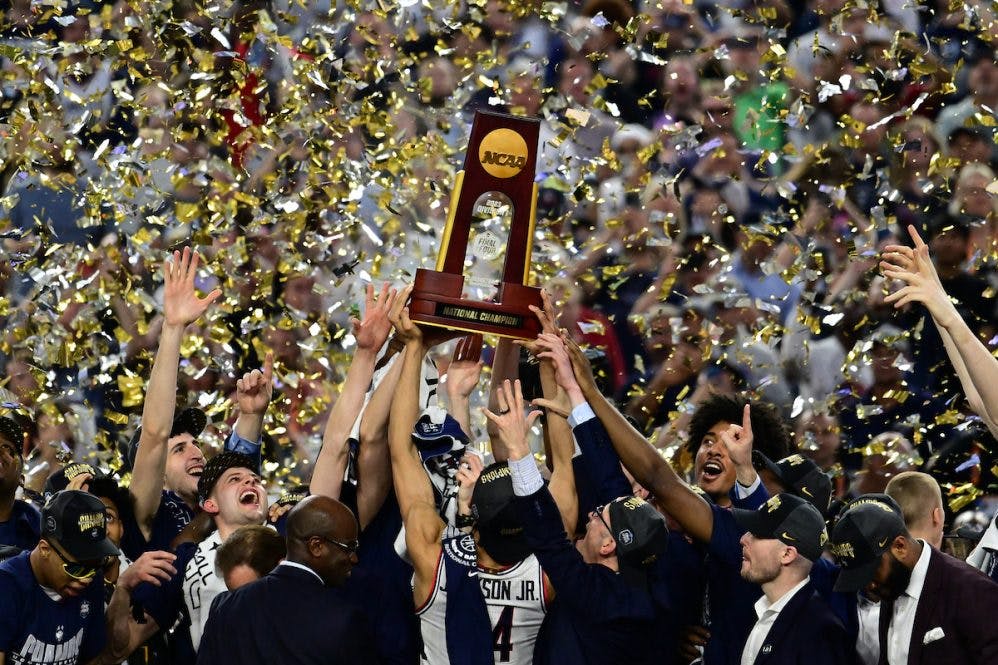
How to Build a Championship-Winning Basketball Team Culture
- By Grant Young
Building a basketball team’s culture takes a lot more than using positive encouragement and convincing players to high-five their opponents after games. Creating a solid culture that can make an impact for players both on and off the court, in the present and in the future, requires a daily commitment not only from a basketball coach but also from their players.
And it can sometimes take years to build a program’s culture from the ground up. Yet, when a coach is conscious about the messages they’re sending, both verbal and non-verbal, the culture they’re trying to build can spread throughout their team like wildfire, and influence winning outcomes sooner than they might imagine.
Coaches like Jim Boone have laid out the blueprint for doing so.
Coach Jim Boone moved among the Nation's top 5 winningest NCAA Division II coaches with over 600 victories in the 2023 season. His career includes two Final Fours and 6 Sweet Sixteens, taking an unprecedented 4 different schools to the NCAA Tournament.
Coach Boone was able to bring this impressive track record of success to multiple different schools because he brought his winning culture along with him. And in his ‘Building a Championship Program: The Jim Boone Way’ course, Coach Boone shares his thoughts and philosophy on building a successful basketball program and creating a winning culture. In doing so, Coach Boone invites coaches to learn the systems and teaching methodology that has led his programs to numerous championships and milestones.
We have pulled some of his most pertinent points, giving you a taste of the value Coach Boone has imparted throughout his course.
Possessions Are of the Utmost Importance
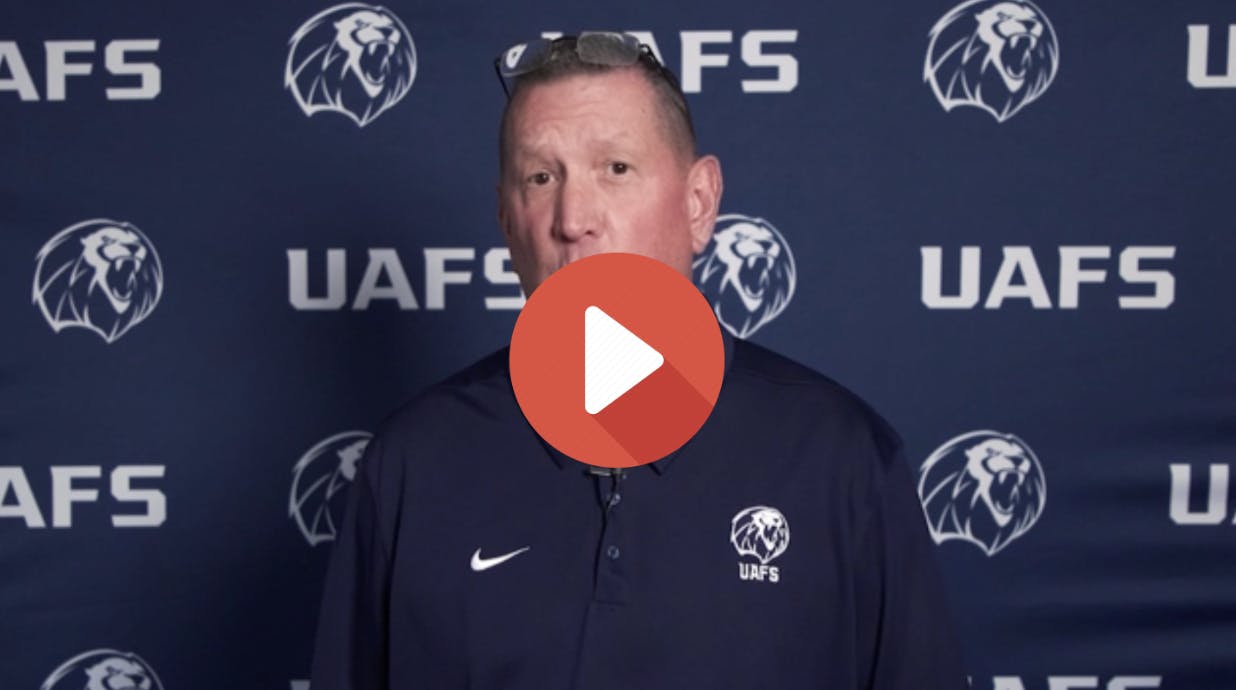
At one point in Coach Boone’s discussion, he notes that, among all 7 of the losing teams that he became the coach of across his career, all 7 had the same obstacle that they initially had to overcome: they were going to lose games before they started winning them. This is because, as we alluded to earlier, creating a culture of winning typically takes some time to build.
And Coach Boone would always begin to address that by emphasizing one thing: “that our players respected and understood the value of every possession.”
All basketball coaches know that the difference between winning and losing can (and often does) boil down to one single possession. And while it can be easy to convince ourselves that the most important possession is the last one in the game, the reality is that any single possession across a game can ultimately be the one that decides a win or a loss.
Therefore, each and every possession must be treated with the utmost care; although that doesn’t mean that coaches should get upset over every wasted possession. Turnovers and poor plays happen to every team in every game. But Coach Boone’s hope is that, if players recognize and respect the importance of every possession, they’ll be more conscious about their decision-making during the game.
Getting Back on Defense
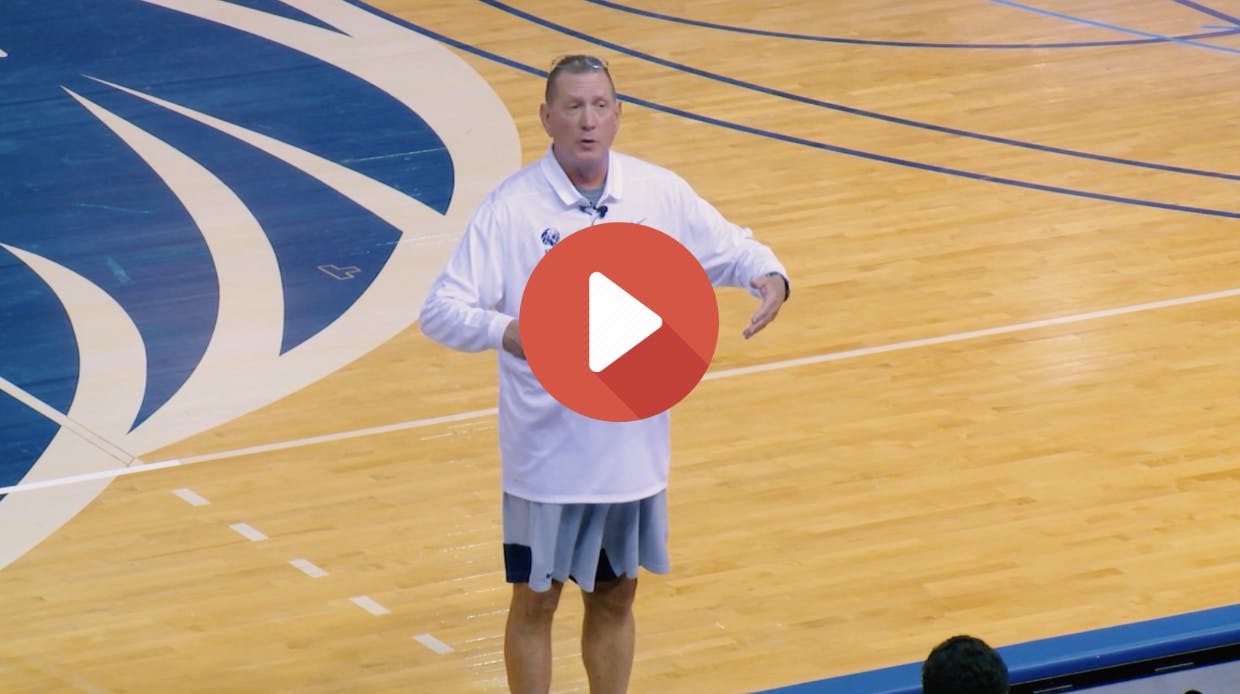
Coach Boone then shared a quote from a coach that he admired. The quote was, “If you want your team to start getting on the track toward winning, teach them how to get back on defense.”
Now, there are many practical reasons why teaching a team to get back on defense will be conducive to winning; the main one being that a team that is always in transition is typically one that is scoring a lot of points. And so if your players aren’t also getting back on transition defense, their teammates are constantly going to be at a disadvantage on the defensive end, and will therefore concede plenty of easy baskets throughout the course of a game. And that is sure to cause a lot of losses.
But players not getting back on defense also speaks to a broader cultural issue. When a player does not get back on defense, it’s usually for one of a few reasons: they either think they got fouled and are complaining to a referee, are upset that they turned the ball over or missed a shot, or simply aren’t giving 100% effort on the court.
All three of these potential causes point to a cultural problem that must be addressed as soon as possible if a team’s culture is going to improve.
And Coach Boone notes that, once you have every one of your players getting back on defense every play, then that’s a sign you’re on the right track to winning games.
How You Put Practice Together
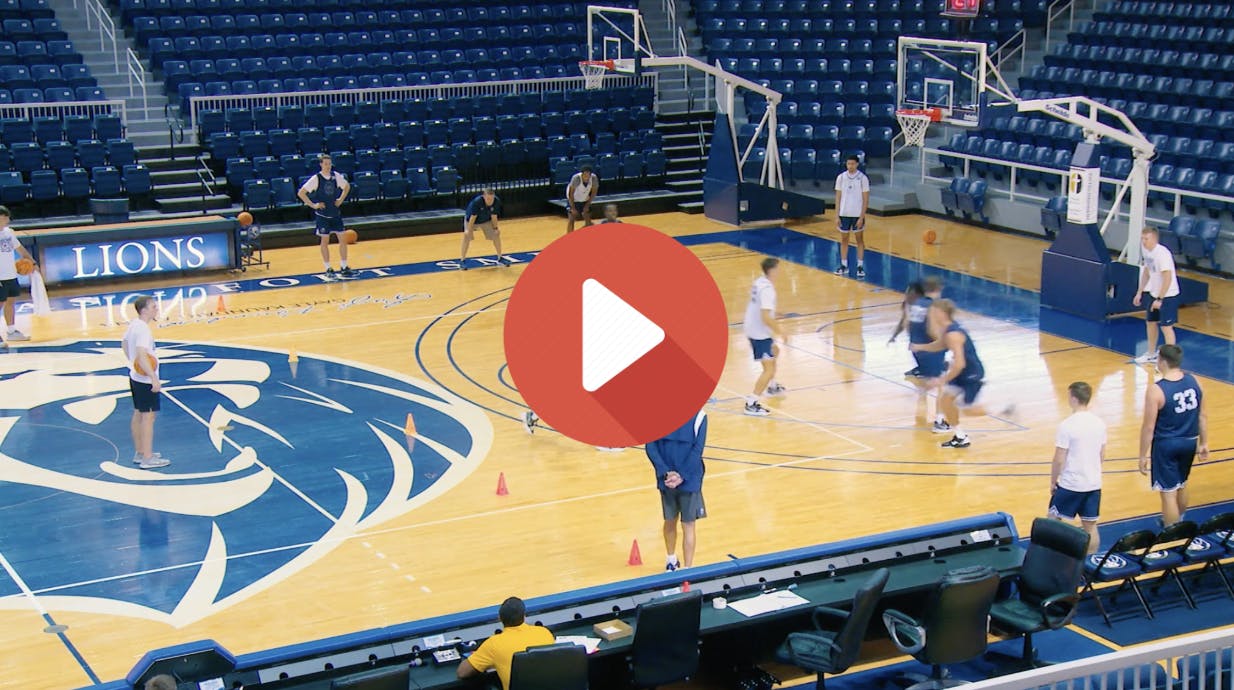
At one point in his course, Coach Boone says, “I don’t think there’s anything that translates more into winning and losing than your practice. And how you put practice together.”
Coach Boone then says that he always tried to start practice with something defense-oriented. The reason he does so is because he believes that, similar to why getting back on defense is important, defense (and specifically, toughness on defense) is the most important on-court component to building a winning culture.
After that, Coach Boone discusses how all players do during their offseason is practice shooting and dribbling, by doing cone drills. Therefore, his team’s first month or so of practices is at least 75% defense-oriented.
What’s more, Coach Boone stresses that, whatever they don’t do well in a practice or game during one day, they’ll do much of that during their next practice opportunity. This is so no aspect of a team’s deficiencies gets neglected, and shows to players they’ll immediately be held accountable for their mistakes.
These are just a few of the valuable nuggets that Coach Boone drops during his course. And his overall message is that it takes every team member (head coach, assistant coaching staff, and every player, from the reading scorer to the guy at the end of the bench) to build and sustain a winning culture. But because you’re the coach, everyone will look at you to set the right example and move your team’s culture toward winning.

